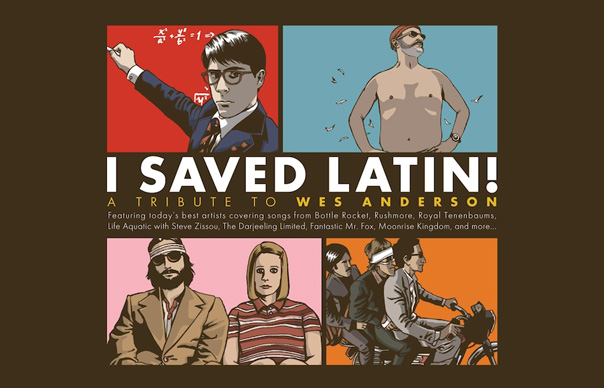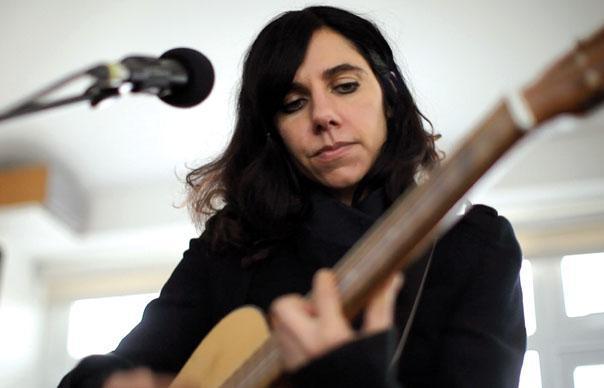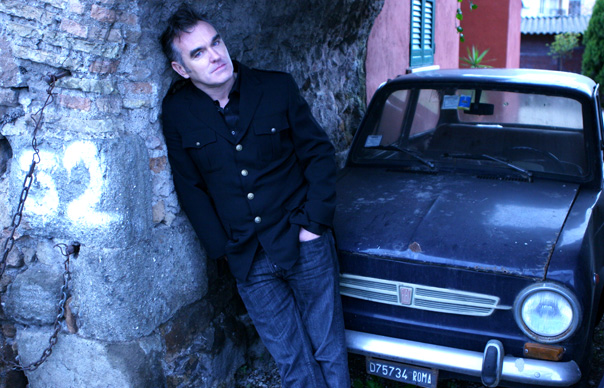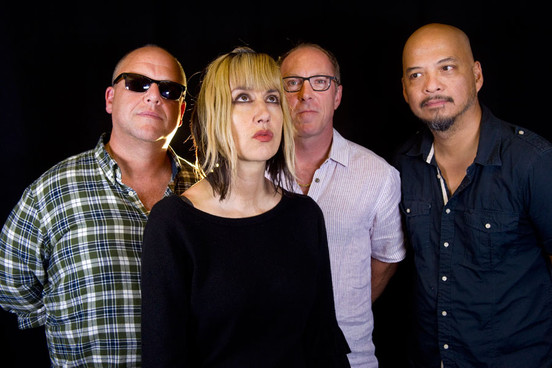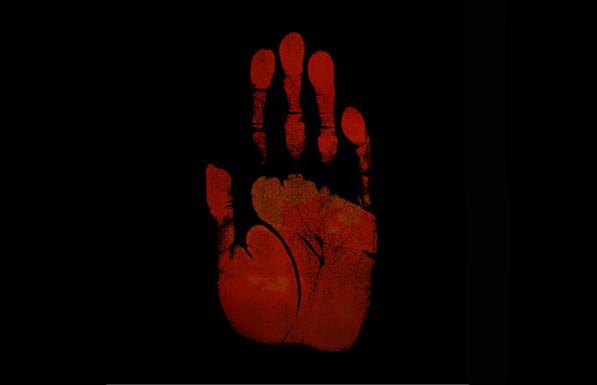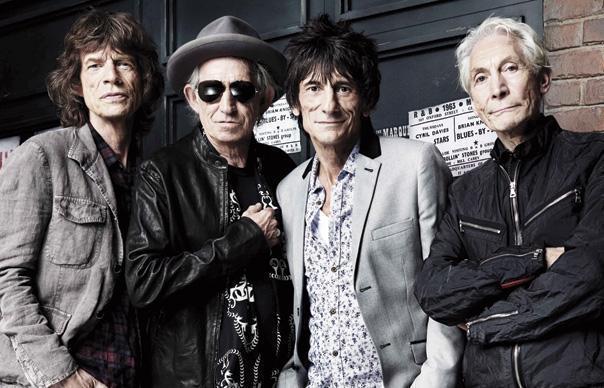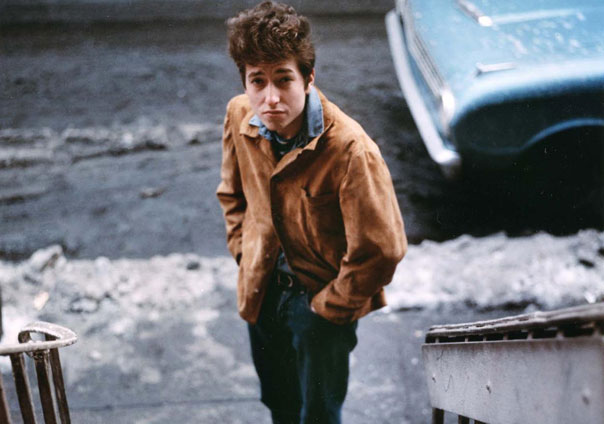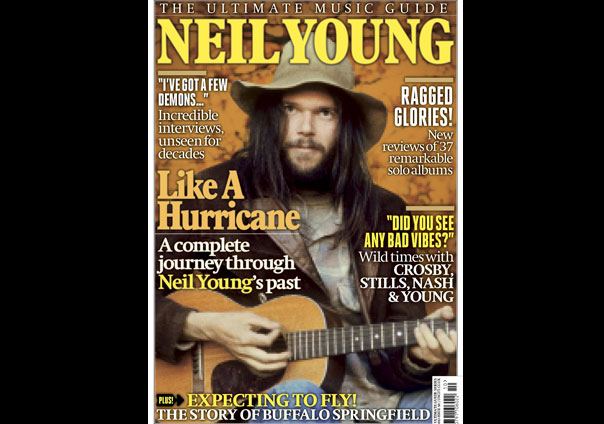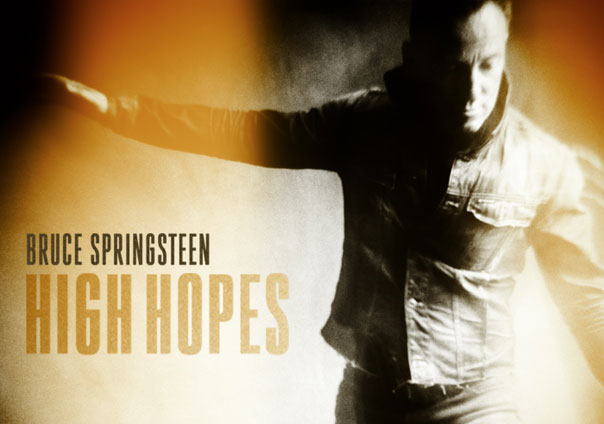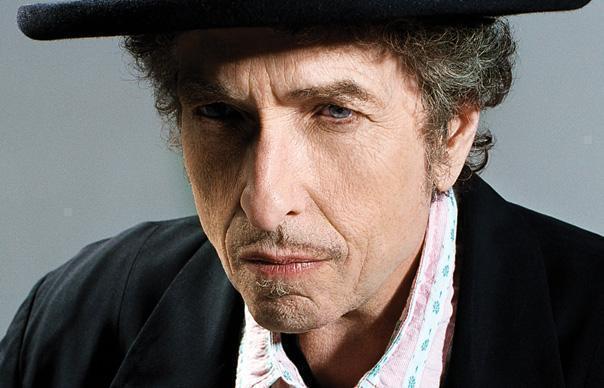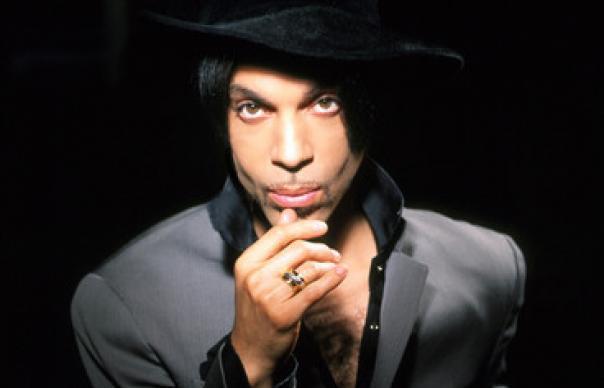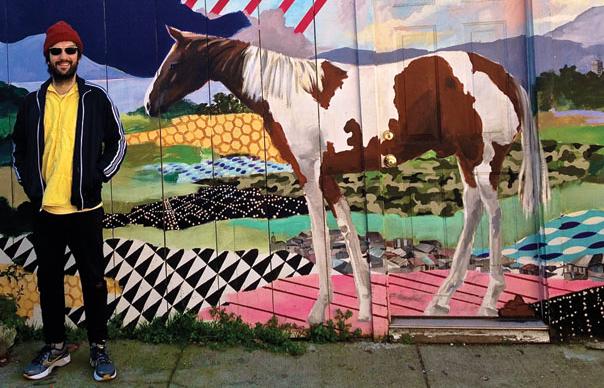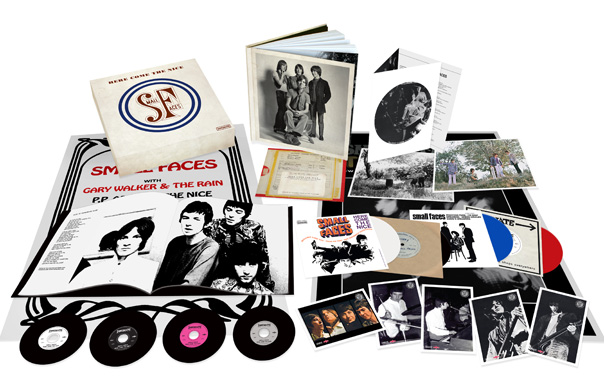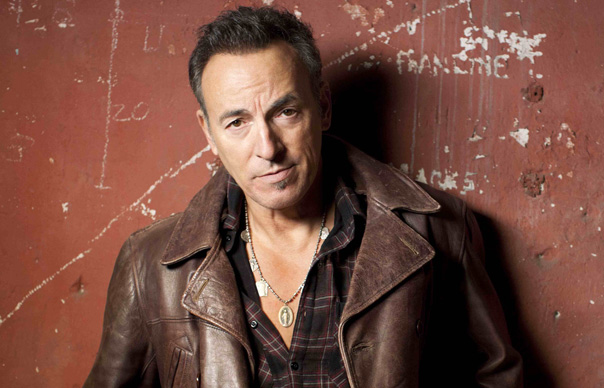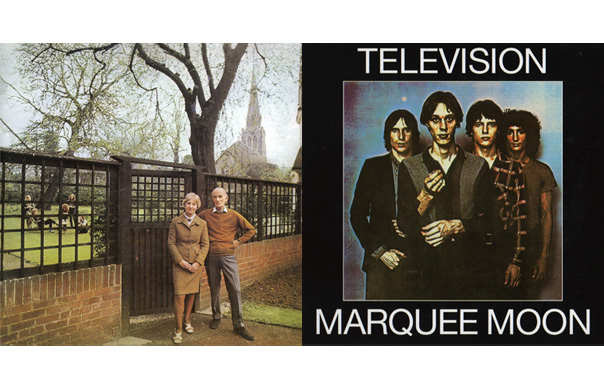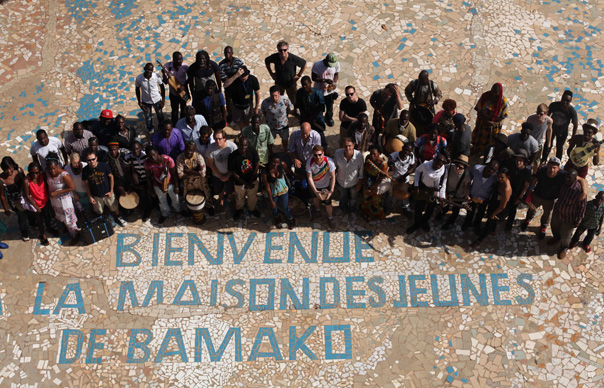In an archive piece taken from Uncut’s January 2005 issue (Take 92), we look back at Dylan in 1975, when he turned the crisis of a deteriorating relationship into one of rock’s most compelling dramas. This is the story of Blood On The Tracks, the album that marked the demise of Dylan’s marriage – and his artistic rebirth. Words: Nick Hasted
__________________
February 13, 1977. Bob and Sara Dylan are screaming themselves hoarse. Sara has just walked down to breakfast in their Malibu mansion to find Bob and their children sat down to eat – with another woman. She’s one of countless girlfriends Bob has been seeing over the previous year. This one has even moved into a house on their estate. But seeing her sitting with their children makes something in Dylan’s wife finally snap. In the furious slanging match that follows, she will later allege, Bob punches her in the face, damaging her jaw. Then he tells her to get out. Their 11-year marriage, one of rock’s great romances, is finished.
But 30 years ago this month, in December 1974, Dylan was completing its true epitaph. Written during their first separation, Blood On The Tracks is one of the most truthful dissections of love gone wrong in rock history, by turns recriminatory, bitter and heartbroken. It is one of Dylan’s peaks, the record where his genius and frail humanity meet.
It comes at a cost. It is the culmination of eight years in which Dylan, settled with Sara and their children, tries to evade his fame and talent, seeking a series of bolt-holes across America where he can somehow be ordinary again. Trying hard to be a good husband, music ceases to matter. For three years in the early ’70s, he releases nothing at all. At one time rock’s untouchable king, he seems washed up. With awful irony, it takes his marriage smashing apart to rekindle his art. Blood On The Tracks is the record he pulls from the wreckage.
__________________
Woodstock 1969. Bob Dylan, the peace movement’s errant prince, sleeps with two single-shot Colt pistols close at hand, and the Winchester blasting rifle he calls “the Equaliser” stacked by his door. Hippies have been capering on his roof, swimming in his pool, fucking in his bed, marching up his driveway in straggling droves. They are coming for answers, or to stare and point, or with less clear, more malign motives. Rifles have been recovered from one persistent, insane intruder. With one part of his mind, Dylan fears his own weapons could mangle these fans. Simultaneously, he wants to “set fire to them”.
It is the height of the countercultural tumult in America, and the stray battalions fetching up at Dylan’s door are looking for the legend they see as its leader: Dylan the acid guru of Blonde On Blonde, who laid down what rock could be, then vanished from view as a generation fell under his spell. These fans are desperate for Dylan to make another great statement, to admit he is music’s messiah. But greatness is the last thing on Dylan’s mind, his mid-’60s mastery an irritant he’s desperate to escape. He is like Clint Eastwood in Unforgiven, hiding out in a farmhouse, wanting the world to forget him. He has put away the musical weapons that tore rock apart, and he has no plans to ever use them again.
Dylan has lived in Woodstock since 1965. He married the ex-model Sara Lownds on November 22 that year. He adores his quiet, shy young wife, immortalised in “Sad-Eyed Lady Of The Lowlands”. It was she who helped ensure his survival from the suicidal pace of his mid-’60s career, as much as the contentious bike crash – on July 29, 1966 – which brought it to a halt. “Until Sara, I thought it was just a question of time until he died,” Dylan’s personal assistant in Woodstock, Bernard Paturel, said. “But later, I had never met such a dedicated family man.” Bob had adopted Maria, Sara’s young daughter from a previous marriage, and the couple had four more children in quick succession. Living with his new family, the almost supernatural creative fire of the mid-’60s passed from him like a fever. Suddenly, he seemed content to walk his daughter to the school bus. In the afternoons, he would write and paint, or visit neighbours, while Sara (typically for non-feminist Dylan) did the chores. It seemed idyllic.
“Having children changed my life and segregated me from just about everything that was going on,” he recalls in Chronicles. “Outside my family, nothing held any real interest for me… I was fantasising about a nine-to-five existence, a house on a tree-lined block with a white picket fence… That would have been nice. That was my deepest dream.”
The music he made in this period of retreat – secret “basement tapes” with The Band never meant for release, John Wesley Harding (1968), Nashville Skyline (1969), Self Portrait (1970) and New Morning (1970) – turned its back on the world and its demands. Though good records, they were placid compared to their predecessors, a calm after the storm. It seemed permanent.
After New Morning, Dylan made no more studio albums for four years. In Chronicles, Dylan claims the period was one of deliberate, near-schizoid deception. Shaken by fame’s assault on his everyday life, resentful of fans’ crazy expectations, he resolved to “demolish my identity”, to transform his image from messiah to the happy hick of Nashville Skyline’s sleeve. “It’s hard to live like this,” he remembers of that mundane mask, as if recalling being a spy, or a serial killer. “The first thing that has to go is any form of artistic self-expression that’s dear to you… Art is unimportant next to life… I had no hunger for it anymore, anyway.”
The playwright Archibald MacLeish, frustrated at the superficial songs Dylan wrote for one of his productions in 1969 (later used on New Morning), asked for something darker, truer. Dylan denied him: “I wasn’t going to go deeper into the darkness for anybody. I was already living in the darkness. My family was my light and I was going to protect that light at all costs.”
The rock community buzzed with consternation as their formerly infallible leader flitted between silence and MOR experiments. However, Dylan soon found that his period of tranquility and abstention from the rock mêlée had damaging effects of its own. Before long, his impersonation of uninspired drift became all too real. “Until the accident, I was living music 24 hours a day,” he told Robert Shelton in 1971. “If I wrote a song, it would be two hours, two days… now, two lines…”
Letting his genius collapse for the sake of a quiet life with his kids couldn’t really continue. And, as the ’70s progressed, the tension between the two sides of his nature slowly tore him in half. Like some awful horror tale, the more he tried to flee from his fame, the more he circled back into its grip. He had left Woodstock’s supposed idyll in late 1969, dismissing it as a “daily journey into nothingness”. Moving his family into the heart of his old Greenwich Village haunts, though, was hardly likely to shake off his fans. When he walked the streets there, he felt stared at like “a giant jungle rat”, a disgusting, unnatural freak. Self-styled “Dylanologist” AJ Weberman made things worse. He picketed Dylan’s house, berating him with a bullhorn for abandoning his flock. He rooted through Dylan’s garbage, looking for clues. He even shoved past an outraged Sara to try to breach their apartment. Dylan eventually battered his tormentor in the street. But dreams of a normal New York life were smashed.
In November 1972, Bob and Sara tried fleeing to Mexico, where Dylan had a part in Pat Garrett And Billy The Kid (1973). “I’d gotten them out of New York, that was the important thing, there was a lot of pressure back there,” he recalled. But the drunken, leering machismo of a Peckinpah set in Durango was no sanctuary. “My wife got fed up almost immediately. She’d say to me, ‘What the hell are we doing here?’ It was not an easy question to answer.”
The Dylans made one last dash for freedom in 1973, heading west to Point Dume, California. It was there that the pressure of their harried life began to tell, and cracks in their marriage appeared. The house started it. Sara wanted another bedroom, which the whole building was knocked down to accommodate. Bob dreamily saw this as an opportunity for a new house, “my own fantasy”. With a less than practical grasp of the building trade, the Dylans had soon caused the project to spiral out of control. An enormous fireplace was torn out and replaced almost weekly; a bridge shaped like women’s legs crossed a fake-natural lake. Fifty-six hippies camped on the site in tepees at Bob’s expense for two years, firing up bricks in flaming kilns for the endless extravagance. An oriental dome crowned this rock folly. Bob and Sara, renting nearby with their five children, fell into fighting over fixtures and fittings. No one had ever seen them argue before.
Meanwhile, Dylan’s musical stasis, self-induced or not, began to crack, too. He’d had a rancorous separation from his manager Albert Grossman in 1971, on discovering his Woodstock neighbour kept half of his songwriting royalties, an arrangement that ran out in 1973 – not unconnected, perhaps, to his writer’s block. Dylan also cut himself loose from Columbia, his home since 1961, sweet-talked into a deal with David Geffen’s Asylum Records. Suddenly, songwriting joints that had seemed seized up creaked back into life. Bob called his old compadres The Band to LA in November 1973 and punched out Planet Waves, his first real LP since 1970, in three days. At one time to be titled Wedding Song, it had its share of odes to married bliss. But one track, “Dirge”, also offered a first rumble of the darkness he had so carefully erased from his recent music. It seemed to recall a regretted, sadistic affair. Real or imaginary: who could tell? “I hate myself for lovin’ you,” he spat, with his old, cold contempt, “but I’ll soon get over that.”
Bleak fantasy or confession, Dylan was soon cheating on Sara for real. The deal Geffen had tempted him with included a blockbusting comeback tour of America with The Band, and an accompanying live album. Tour ’74 and the fiery double LP Before The Flood were triumphs, as Dylan shed his diffident mask to aggressively stake his place in ’70s rock’s new stadium hierarchy.
Sara, though, stayed behind. “She despised the rock’n’roll lifestyle,” Dylan roadie Jonathan Taplin told biographer Howard Sounes. “People who just wanted to talk about music were boring to her.” “She doesn’t have to be on the scene to be happy,” Dylan had said admiringly of his sad-eyed lady, back in Woodstock. Now, though, he was out on his own – after eight years’ abstinence, just as rock touring reached new debauched depths. The Band had roadies take Polaroids of girls wanting to get backstage, poring over potential beauties like horse-traders. Cast-offs were handed to the crew. How far Dylan dived into the groupie pool isn’t known. But by February, he was certainly straying. He met Columbia Records executive Ellen Bernstein, 24, in California, seeing her for much of that year. Actress Ruth Tyrangiel claimed Dylan began a 19-year affair with her the same month, becoming, she claimed in court in 1995, “nurse, confidante, home-maker, housekeeper, cook, social companion and advisor” to Dylan, who she said promised to leave Sara for her. Though her charges were dismissed, Dylan’s wandering dick, and the massive strain on his marriage, were common knowledge in the papers that summer.
With his dream home a bomb site, Dylan was also back in New York by the spring. Here, he started a stranger relationship. When he anonymously attended art classes at Carnegie Hall, painter Norman Raeben, 73, took a fatherly shine to him. Dylan had male-bonded over his amateurish art before, with Woodstock neighbour Bruce Dorfman. Now, Raeben’s more radical tutelage gave Dylan a guru and father figure. The catalyst came when Raeben made Dylan glance at a vase, then took it away. “Draw it!” he snapped. Dylan began to buzz with new ideas about perception, which would soon surface in his songs. At the same time, his adoration of the older man lured him further from Sara. Raeben was “more powerful than any magician”, he later claimed, clearly under his spell. “I went home after that and my wife never did understand me ever since that day. She never knew what I was talking about. And I couldn’t possibly explain it.”
After eight years of suppression, the mask was slipping. Like Clint the killer in Unforgiven, the taste Tour ’74 had given Dylan of his old life proved addictive. He had begun to smoke and drink heavily again; even the mellow, mature voice he had essayed since Nashville Skyline (when on a smoking break) was roughed up, raw and raging on Before The Flood. Jekyll was turning into Hyde, and Sara couldn’t stand it. In summer 1974, they separated.
Dylan retreated to a farm he’d just bought back in his home state, Minnesota, which he shared with his brother David. His new lover, Ellen Bernstein, visited for a while. Sara was rarely seen. In this bolt-hole, he began to write Blood On The Tracks.
__________________
“Private songs” was what Dylan told his old Columbia mentor John Hammond he’d be recording when he rang to book studio dates, in September 1974. Certainly the lyrics he’d hammered out in Minnesota were unlike anything he’d written before. “Tangled Up In Blue” was among a dozen songs owing little to the lysergic torrents of his twenties, or the homilies he’d settled for since. These were words singed by the experience of heartbreak, the 33-year-old Dylan now ruefully mature.
The songs’ importance to him was shown by Blood On The Tracks’ unusually protracted recording, using three sets of musicians in two states, in sessions spread over three months. It still only took six days in all. But for a man who created the classic John Wesley Harding in six hours, that was a marathon.
When the Blood On The Tracks sessions began, though, on September 12, Dylan’s mood was unaccountably slapdash, even for him. The first musicians were chosen by chance when producer Phil Ramone, pacing nervously outside New York’s Columbia Studio, bumped into guitarist Eric Weissberg of crack session band Deliverance (Weissberg had made his name with the “Duelling Banjos” sequence of John Boorman’s film). Ramone told Weissberg that Dylan was due that evening, but hadn’t bothered to book a band. Deliverance filled in at Ramone’s request. But the Dylan who arrived that night was skittish, with nerves, excitement – or maybe just the red wine he was gulping like water.
“I got the distinct feeling Bob wasn’t concentrating,” Weissberg recalled, “that he wasn’t interested in perfect takes. He’d been drinking a lot of wine; he was a little sloppy. But he insisted on moving forward, getting onto the next song without correcting obvious mistakes.”
The half-cut legend’s disdain for studio convention was driven home to a shocked Weissberg when they listened to a playback of their first effort, “Simple Twist Of Fate”: “In the middle of it all, Bob starts running down the second song for us. He couldn’t have cared less about the sound of what we had just done. We were totally confused, because he was trying to teach us a new song with another one playing in the background.” Weissberg, a session veteran, tried to stay calm. “I was thinking to myself, ‘Just remember, Eric, this guy’s a genius. Maybe this is the way geniuses operate.’”
“Meet Me In The Morning” and “Call Letter Blues” – near-identical, swaggeringly played blues melodies with radically distinct lyrics – were among the four songs completed in this first three-hour blast. Their power showed the instincts of the apparently plastered Dylan were fully focused. But Deliverance was dispensed with the next day as he shuffled the deck, searching for the sound he really wanted. A new pared-down trio – pedal-steel guitarist Buddy Cage, bassist Tony Braun and organist Paul Griffin – finished the recording, which stayed well-oiled. A passing Mick Jagger considered chipping in on drums and backing vocals, but settled for swigging Dylan’s champagne.
Twelve tracks were completed at these New York sessions, whittled down to 10 for the promo version of Blood On The Tracks pressed and sent to key radio stations in November, as Columbia prepared for its release on Christmas Day, 1974. This phantom album, which would never make it to the racks, was very different from the record Dylan would eventually sanction. And even at this stage, he was clearly worried by what such autobiographical insights might encourage in his troubled marriage. The relatively benign “Meet Me In The Morning” was chosen over the far more rancorous “Call Letter Blues”. The latter, finally released on 1991’s Bootleg Series box set, seethes with the guilt and bitterness of a man newly abandoned by his wife. Its pathetic domestic details can only come from life: “Well, your friends come by for you/I don’t know what to say,” Dylan complains. “I just can’t face up to tell ’em/Honey, you just went away.” And what would Sara have made of these lines, spat with gleeful venom?: “Well, children cry for mother/I tell them, ‘Mo-ther TOOK A TRIP.’” The song’s sensitivity is emphasised by the mysterious omission, as late as 2004’s definitive Bob Dylan Lyrics book, of its final verses, in which he watches his ex-partner with another man and considers “call-girls in the doorway/giving me the eye”. This long dark night of a divorcee’s soul, too much even for Dylan at his most exposed, was swiftly buried.
Dylan took the record back to Minnesota with him for the Christmas holidays. Back in New York, hardboiled journalist Pete Hammill had written elegiac sleevenotes, which would later net him a Grammy. Columbia printed them up on iconically elegant covers, the front of which showed a solarised, side-on photo of Dylan in shades: impassive, indistinct, and seemingly shaking apart.
The presses were ready to roll. But Bob and brother David, listening to the sessions, convinced themselves at least half the tracks lacked some vital spark. “I had the acetate,” Bob later recalled. “I hadn’t listened to it for a couple of months. The record still hadn’t come out, and I put it on. I just didn’t… I thought the songs could have sounded differently, better. So I went in and re-recorded them.” Dylan rang Columbia to stop production on Christmas Eve, hours before release. The pressure on everyone involved, as schedules were shredded, must have been awful. It was the only time Dylan ever took such a stand over a recording. His personal investment in it couldn’t have been clearer.
David convinced his brother there was no need for a desperate flight back to New York. He had worked in Minnesota’s music industry for years, and had all the contacts they would need. On December 27, Minneapolis’ Sound 80 studio was booked for a swiftly assembled group of crack local musicians. The introverted Dylan only spoke to these strangers through David at first. But when they kicked into “Idiot Wind”, Blood On The Tracks finally fell into place.
Dylan was concerned that verses in this epic song, about an affair’s sad collapse, corresponded too blatantly to his split with Sara – another reason, perhaps, for his sudden cold feet. He spread the new lyrics across a music stand on pink post-it slips. After one take, he wandered off for a soda, and came back with yet another scribbled verse. Then they launched into the second take, which would define the album.
Whatever had happened to Dylan’s head since September, thoughts of love and peace for his absent wife were not to the fore. Whether or not they were less traceable to Sara, his new lyrics envisioned an ex-lover blinded by corruption, whose face had warped beyond recognition. Even getting near her room or touching her possessions made him ill with loathing. Worse, he lumped her in with the fame-crazed fans who had hounded them both out of Woodstock and New York, making her ask him “where it was at”. His voice was a lashing whip of high venom, as an organ churned the track into a carnival whirl. With its instinctively surreal images (“There’s a lone soldier on the cross, smoke pourin’ out of a boxcar door…”), it would prove the only time he would ever plug back into the mysterious source of Blonde On Blonde’s supernatural lyric streams and “wild mercury sound”. This was appropriate because, as verse piled onto verse, “Idiot Wind” seemed to unmake one of that album’s most potent spells. It was the dark flipside of “Sad-Eyed Lady Of The Lowlands”, an equally majestic rejection of that song’s idol, Sara.
“You have a nice way of picking things up here,” Dylan mildly told engineer Bill Martinson, when it was finished. He moved straight onto “Tangled Up In Blue”.
Another candidate for Dylan’s greatest song, he had been struggling to wrestle it into shape since he first wrote it that summer (and he would stay unsatisfied, releasing a third, messy draft on 1986’s Real Live). A prismatic overview of a love affair sadly faltering over the years, its second verse in particular (“She was married when we first met/Soon to be divorced…”) seemed to refer directly to Dylan’s determined extraction of Sara from her first marriage, to Hans Lownds. But its autobiographical undercurrents were matched in importance by Dylan’s brilliant use of techniques learned from Norman Raeben.
Dylan explained the song’s shifts in perspective, blurring the lovers and a narrator, with clear reference to his teacher. “What’s different about it,” he said, “is that there’s a code in the lyrics, and there’s also no sense of time. I was trying to make it like a painting where you can see the different parts but then you also see the whole of it… the characters change from the first person to the third person, and you’re never quite sure if the third person is talking or the first person is talking. But if you look at the whole thing it doesn’t really matter.”
Again, something vital was gained in Minnesota. Where the New York sessions added up to a superb example of ’70s acoustic singer-songwriting, ready to duke it out with James Taylor, Dylan was now consciously searching for his old mid-’60s punch. He’d already gone back to his former womanising, drinking ways. Now the crisis with Sara this had caused made him rebuild his full musical arsenal. Everyone chipped in to help. Musician Kevin Odegard suggested he pitch his voice up a key, allowing a more sprightly assault. David rewrote the drum parts, shoving up snapping snares. Dylan’s instructions were explicit. “It was specifically made clear to us,” Odegard recalled, “that Bob wanted to duplicate the sound he’d gotten on Highway 61.”
Dylan broke for the weekend, returning on December 30, 1974. He brought his children with him. Their reaction removed any doubt that Blood On The Tracks was, as Jakob Dylan would later claim, “my parents talking”. The holiday atmosphere chilled as Dad started to sing “You’re A Big Girl Now” and “If You See Her, Say Hello” – taken to be heart-broken farewells to Sara. “It was a little down,” said bassist Billy Petersen. “The sentiment was a little heavy.”
Almost the final touch was a high mandolin part Dylan wanted to add to “If You See Her…” for a sound “like birds’ wings flapping”. The mandolin player, Peter Ostroushko, refused to play so high up its neck, claiming such notes wouldn’t ring true. Dylan snatched it from him and played it perfectly himself.
Blood On The Tracks was finally released on January 20, 1975, split 50/50 between the New York and Minnesota sessions. Despite the emotional devastation that inspired it, the album Dylan had created was not a maudlin tearjerker, or pure sobbing confession. It was a balanced masterpiece – “Idiot Wind” bracketed by the softer sentiments of “You’re A Big Girl Now” and “You’re Gonna Make Me Lonesome When You Go”. The latter, allegedly written about Ellen Bernstein after her visit the previous summer, may have secretly twisted the knife into Sara. But when “Shelter From The Storm”, a plea for salvation from an old lover, is tallied, the album becomes a rounded, mature picture of love in crisis. Amusing and dramatic, too – not least on “Lily, Rosemary And The Jack Of Hearts”, a tense western epic in 16 verses, as astonishing as the heart-breakers around it. And Dylan’s performances were as powerful and perfectly judged as any he’d ever given. After trying to disappear for eight years, trauma had stripped his genius bare.
Reviewers agreed. They noted with cruel satisfaction how the break-up had blown away his malaise, replacing Dylan the dull, happy husband with the ‘real’ Bob. “The message is a bleak one,” wrote The Village Voice’s Paul Cowan. “At 34, with his marriage on the rocks, he is an isolated, lonely drifter once again… as in all Dylan’s great albums, pain is the flip-side of his legendary cruelty… [he] bears a very special kind of curse.” Dylan tried to throw such critics off the scent. “I would even record an entire album based on Chekhov short stories,” he ‘recalls’ in Chronicles with Olympic cheek. “Critics thought it was autobiographical – that was fine.” In 1985, he was angrier: “Well, I read this was supposed to be about my wife. I wish somebody would ask me first before they would go ahead and print stuff like that. Stupid and misleading jerks… anyway, it’s not the experience that counts, it’s the attitude towards the experience. I don’t write confessional songs. Emotion’s got nothing to do with it. It only seems so, like it seems that Laurence Olivier is Hamlet…”
Back in 1975, though, he was more honest, when a radio interviewer said she’d enjoyed the record. “A lot of people tell me they enjoyed that album,” he snapped. “It’s hard for me to relate to people enjoying that kind of pain.” Whatever their motives, a million Americans had bought Blood On The Tracks by March ’75. It went to No 1 (No 4 in the UK), for a while even fending off Bruce Springsteen’s Born To Run. His family’s collapse had saved his career.
__________________
The pain Blood On The Tracks describes didn’t end when the album was finished. A few months later, Bob and Sara tried to reconcile, making a strained joint appearance at a benefit concert. But when he holidayed in France to celebrate his 34th birthday, staying with artist David Oppenheim (who painted Blood On The Tracks’ back cover), Sara would not come. Dylan constantly rang her. He became “completely despairing, isolated, lost”, Oppenheim recalled. They drank and womanised themselves into oblivion, but Bob was in a bad way.
The man who claimed that he didn’t write autobiographical songs then did so in shameless style to try to win Sara back. In New York’s Columbia studio on July 31, making Desire, everyone was surprised when she appeared. She wanted to see if there could be a “getting back together”, the album’s co-lyricist, Jacques Levy, said. As the session was breaking up, Dylan ordered the band back into the studio. “‘Sara’,” he barked. “‘Part One.’”
The song was a plea for forgiveness, Dylan fighting dirty as he described old holidays with their children, and “writing ‘Sad-Eyed Lady Of The Lowlands’ for you”. The venom of “Idiot Wind” seemed reversed as he sang with abandon to the “love of my life”.
“Bob obviously wanted to surprise her with it,” a witness recalled to biographer Bob Spitz. “He hadn’t told anyone he intended to record it, not even the band who were expected to follow him. Those of us sitting in the control room stopped talking and froze. Nobody moved, not a word was said. Bob had the lights dimmed more than usual, but as the music started, he turned and sang the song directly at Sara, who sat through it all with an impervious look on her face. It was as if she had put on an expressionless mask. The rest of us were blown away, embarrassed to be listening in front of them. He was really pouring out his heart to her. It seemed as if he was trying to reach her, but it was obvious she was unmoved.”
As the song finished, only a groupie stirred. “I don’t know who this Sara chick is,” she drawled obliviously to Dylan’s wife. “But she better hurry up before she’s six feet under.”
“She was absolutely stunned by it,” Levy told Howard Sounes. “And I think it was a turning point… It did work. The two of them really did get back together.”
That take of “Sara” became Desire’s last track. Other songs, “Isis” especially, and the album’s mood of joyous release, suggested Blood On the Tracks had only been a bleak interlude. But the Rolling Thunder tour that rumbled through 1975-6 proved its dark insights were only too true.
Sara went on the tour to play both Dylan’s lover and a whore in the movie he planned to make around it, Renaldo And Clara. The torn feelings in this casting were played out nightly. Bob and Sara’s romance seemed rekindled at first. But Joan Baez wasn’t his only sometime lover on the road with them. Other girlfriends popped up at every stop and travelled openly with Dylan. Band members Scarlet Rivera (violinist on Desire) and Ronee Blakley were rumoured to be sleeping with him. Even a girl bizarrely employed to teach Bob tightrope-walking was soon in his bed. By the tour’s second half in 1976, Sara was an infrequent, glowering visitor. Baez once glimpsed Dylan kneeling before her, begging for forgiveness yet again. At other times, they had poisonous rows, in parking lots and motel rooms. Dylan, always a wine-drinker, switched to brandy. “Idiot Wind”, not “Sara”, was his song again now. At a televised gig in Colorado on his 35th birthday, with his wife and children watching, he sang it into a howling gale. Released on Hard Rain (1976), it beats even Blood On The Tracks’ version for paint-blistering bile.
The final act was played out in Point Dume, where their troubles had begun. By 1976, their dream home was finally fit for habitation. It was just in time to stage their marriage’s meltdown. Sara’s court papers, when she filed for divorce on March 1, 1977, showed how savagely things had deteriorated. The man who had abandoned rock’s most brilliant career to be with her seemed a monster now.
“He began to act in a bizarre and frightening manner, causing me to be terrified of him,” she alleged. “He would come in and out of the house at all hours, often bursting into my room, where he would stand and gaze at me in silence and refuse to leave… I was in such fear of him that I locked doors to protect myself from his violent outbursts…”
She filed for divorce after those brutal scenes over the breakfast table, when Dylan allegedly hit her. A nasty battle over the children’s custody followed (he eventually got to see them each summer), before Sara was awarded $36 million – roughly half of Dylan’s worth – when the divorce was finalised on June 30, 1977. The idiot wind – or Bob’s womanising and weird moods – had blown them apart. “Marriage was a failure,” he told a journalist in 1978. “Husband and wife was a failure, but father and mother wasn’t a failure. I wasn’t a very good husband… I don’t know what a good husband is. I figured it would last forever.”
Dylan and Sara were never close again. But her part in his music carried on. In 1977, while visiting Rolling Thunder tour-mates Steven Soles and T-Bone Burnett, he played a set of songs too frightening to ever be heard again: like Blood On The Tracks 2, with the love torn out. “They were all very, very, very tough, dark, dark, dark songs,” Soles told Howard Sounes. “None of them saw the light of day. They got discarded because I think they were too strong. They were the continuation of the Bob and Sara tale, on the angry side of that conflict.” One of these blackest of tracks, “I’m Cold”, scared Soles. “It was scathing and tough and venomous. A song that would bring a chill to your bones. That’s what it did to me. T-Bone and I, when he left, our mouths were just wide open. We couldn’t even believe what we’d heard.”
Dylan’s last official word on Sara, Street-Legal (1978), was a more chastened affair. In too ragged a state to craft Blood On The Tracks’ true sequel, “Where Are You Tonight? (Journey Through Dark Heat)”, swirling with images of betrayal, sorrow and corruption, was at least a worthy coda.
The so-called Alimony Tour (1978), though, his divorce’s final fall-out, saw Dylan widely ridiculed. The career Blood On The Tracks had saved soon went into a long tailspin – two dark decades where he once more seemed washed up. But the emotional honesty its painful making had wrenched from him lingered. His most recent revival, Time Out Of Mind (1997), is a death-haunted old man’s companion piece to Blood On The Tracks’ thirtysomething blues.
The blood Dylan spilt 30 years ago, in the end, was his own. The wounds are still with him.
Bob Dylan’s Complete Album Collection Volume One is on sale now; you can find details here.


